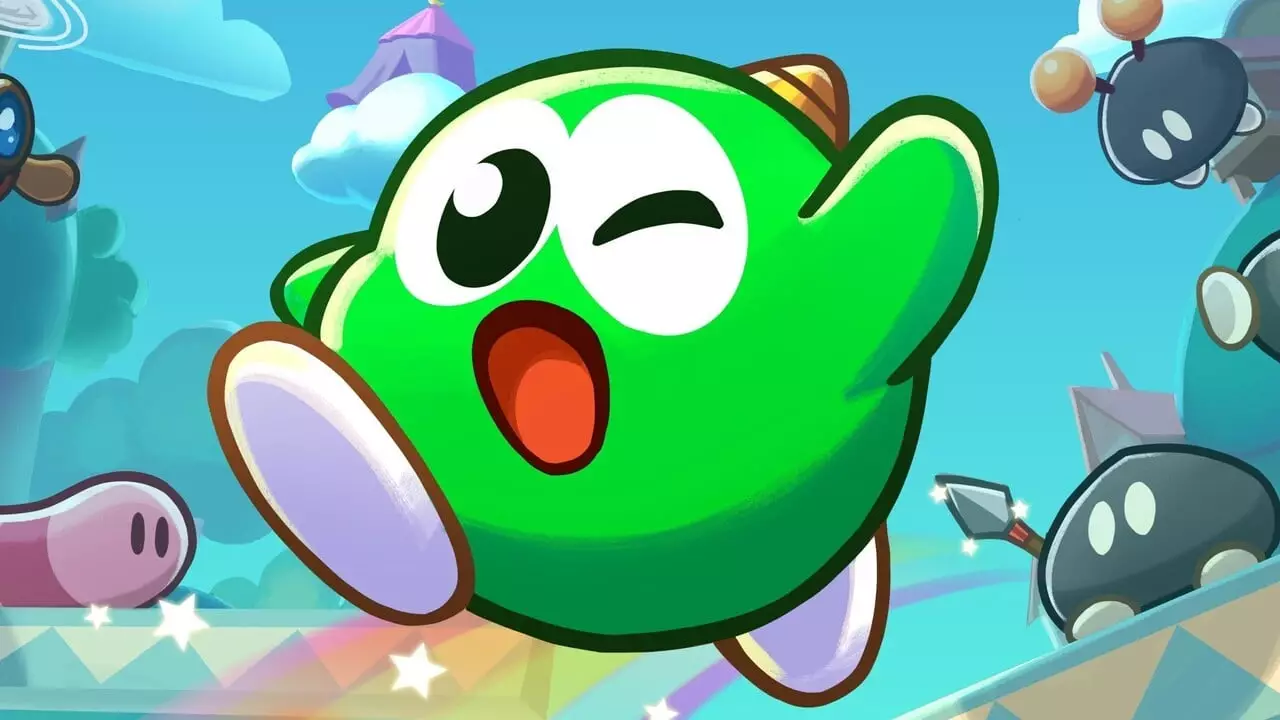The unveiling of Gimmick! 2 in June 2024 was akin to a bolt from the blue for gamers and fans of retro platformers. Few had anticipated a sequel to the original Gimmick!, a game that—despite being released in 1992—captured the imaginations of niche audiences, solidifying its status as a cult classic. Gimmick! stands out in gaming history not only due to its gameplay but also because of its scarcity; the original saw limited distribution, circulating mainly in Japan and a surprising few copies in Sweden. The acclaim surrounding this platformer, coupled with its difficulty, made it a nostalgic gem for players who relished overcoming its challenges. Fast-forward to 2024, and the torch has been passed to Bitwave Games, the studio responsible for the Gimmick! Special Edition in 2022, rekindling interest in this hallowed franchise.
Breathing Life into an Icon
Gimmick! 2 transcends mere homage; it is a thoughtful continuation that both respects its predecessor and innovates with modern sensibilities. The game preserves the essence of the original while introducing new elements that define its individuality. The shift to a hand-drawn visual aesthetic marks a significant upgrade from the original’s pixelated charm, embodying a brighter, more whimsical world inhabited by the endearing protagonist, Yumetaro. Yet, beneath this cheerful exterior lies a gameplay experience designed to challenge both new and veteran players alike.
Players are immediately drawn into the game’s fantastical narrative without the need for dialogue. The mission is straightforward: rescue a young girl from the clutches of a malevolent wizard. The simplicity of this premise masks the intricate mechanics that players must master to progress. Yumetaro’s controls are deceptively straightforward—move, jump, and launch a versatile star projectile—but the complexity arises from mastering the physics and momentum behind these actions.
At the heart of Gimmick! 2 lies its star-slinging mechanic, a cornerstone of both puzzle-solving and combat. Players must learn to wield this projectile effectively, utilizing its bouncing dynamics to engage with the environment. The star can activate switches, defeat foes, or even serve as a makeshift platform for navigating treacherous terrains. This system encourages experimentation; players will often find themselves employing trial and error to grasp the best strategies for each unique challenge.
The game’s level design is commendable; each of the six worlds is meticulously crafted with a mix of spikes, pipes, and activatable platforms, ensuring a rich gameplay experience. While Gimmick! 2 doesn’t reinvent the genre, it features elements that maintain engagement, like an intense chase from a rolling snowball or unexpected rides on marine leviathans. Challenges are cleverly integrated into the level structure, ensuring that players never face the same scenario twice.
Difficulty with Accessibility
One of Gimmick! 2’s hallmarks is its dual difficulty settings which cater to a wide range of players. The “Assisted” mode offers a gentler introduction for those new to the platformer genre, while the “Gimmick!” mode harks back to the unforgiving nature of the original, testing the mettle of even seasoned gamers. This thoughtful approach ensures that, while skill is crucial, players can still enjoy the game and learn at their own pace.
Completing the game might take an average skilled player around 90 minutes; however, the initial experience could stretch to several hours when factoring in exploration and the necessary trial and error. The “Assisted” mode serves as an essential stepping stone, perfecting the mechanics before tackling the more intense gameplay of the original mode, which delights in complex challenges while minimizing unnecessary frustration.
A significant aspect of Gimmick! 2 lies in its presentation. The hand-drawn art style invites comparisons to visually appealing titles like Cut The Rope, offering a polished and immersive experience. Coupled with a serene soundtrack composed by David Wise, a figure synonymous with iconic gaming music, Gimmick! 2 creates an engaging audio-visual tapestry that encapsulates the whimsical nature of its gameplay. Without an overload of intrusive sound, the music wraps around players, enhancing rather than detracting from the experience.
Though early reviews indicated some performance issues, the game’s functionality on platforms like the Nintendo Switch largely provides a smooth, uninterrupted experience. Players can expect minimal lag or framerate dips, which is crucial, especially in a genre that thrives on precision and speed.
Conclusion: A Worthy Successor
Gimmick! 2 emerges not merely as a nostalgic revival but as a sophisticated platformer that demonstrates profound respect for its roots while charting its own path. It is a treasure trove for both retro enthusiasts and newcomers alike, offering meticulously crafted challenges set against a vibrant backdrop. Although it demands a higher skill level compared to more casual titles, its accessibility and generous checkpoints make it a balanced addition to any gamer’s library. For those who adored the original or have an appreciation for platformers, Gimmick! 2 is not just a recommendation; it is a must-play. Bitwave Games has successfully crafted a sequel that stands on its own while acknowledging the brilliance of its predecessor, ensuring that Gimmick! will live on for generations to come.


Leave a Reply